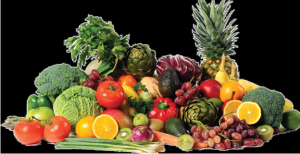The key to eating home grown delicious vegetables, is selecting the correct time to harvest. Below are some of the easiest ways to identify the correct time to pick your most common summer veggies.
- Snap Beans: Pick them before you can see the seeds bulging. They should snap easily into two. Check daily. It doesn’t take long for beans to go from tender to tough.
- Corn: Usually 3 weeks after the silks form, they will turn dry and brown. The kernels should exude a milky substance when pricked.
- Cucumber: Cucumbers race to the harvest with zucchini. Check daily and harvest young. Timing and length will vary with variety. The fruits should be firm and smooth. Overripe cucumbers can be very bitter or pithy, even before they start to turn yellow.
- Eggplant: Slightly immature fruits taste best. The fruits should be firm and shiny. Cut rather than pull from the plant.
- Muskmelon (cantaloupes): The general rule of thumb is that the color should change to beige and the fruit will ‘slip’ from the vine when lifted. You should also be able to notice a sweet smell when ripe.
- Peas: The pea pods should look and feel full. Peas are sweeter if harvested before fully plumped. Peas really need to be tasted to determine if they are sweet enough.
- Pumpkins: Once the pumpkins have turned the expected color and the vines are starting to decline, check to make sure the skin has hardened enough that poking it with your fingernail will not crack it. You don’t want to pick your pumpkin too soon, because it will stop turning orange once its cut, but don’t leave them out if a hard frost is expected.
- Squash: Pick young and check often. The skins should be tender enough to poke your fingernail through.
- Tomatoes: Harvest tomatoes when they are fully colored and slightly soft to the touch. Gently twist and pull from the vine.
- Watermelon: The white spot on the bottom of the melon should change to a deep yellow when ripe. Some people can hear a change in the sound made when the melon is thumped with the finger. It should make a hollow sound when ripe, but this is a skill that must be developed.
For more information about projected harvest times, check out the Florida Vegetable Production Guide, published by UF / IFAS Extension. Enjoy and share your garden’s bounty, happy harvesting.
Latest posts by Eddie Powell (see all)
- Vegetable Garden Insect and Disease Management - June 10, 2015
- Insect Problems in the Heat of Summer - May 8, 2015
- Gardening in a Bucket - April 14, 2015


